2012-07-16
InfiniLED, backed by ScienceWorks Ventures plc and a Tyndall National Institute (UCC) spin-out, has signed an access agreement with Tyndall National Institute, Cork (Tyndall). Under the agreement, InfiniLED’s engineers will work within the institute’s ISO 9001 Certified Compound Semiconductor cleanrooms to fabricate μLED (MicroLED) technology. In MicroLEDs, a parabolic structure is etched on the back of the LED wafer to focus the light generated into a collimated beam - the core differentiator of the μLED technology. The...
Continue reading →
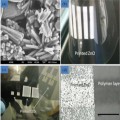 2012-07-11
2012-07-11
According to a doctoral thesis released by Gul Amin of Linköping University, white LEDs made from zinc oxide (Zn02) and a conducting polymer can be manufactured directly on a piece of paper. Nanostructures of Zn02 have a number of characteristics that make them suited to the manufacture of white LEDs, among them a large bandgap and a natural white-light emission. The active components of Amin's emitters are nanothreads of Zn02 on a thin layer of polydiethylflourene (PFO), a conducting polymer. (The paper must first be coated with a thin, water-repellent, pro...
Continue reading →
2012-07-10
Zigui Kento Electronic in Hubei Province, China has made a breakthrough on SMD LED packing technology. According to the company ,it has expanded the span of LED lighting angle from 120° to 150°,and increased the light efficiency by 20% as well as reduced more than 50% cost , which filling the blank in SMD LED application in outdoor high definition LED display....
Continue reading →
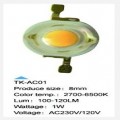 2012-07-06
2012-07-06
Chinese firm Newsun has announced to develop a real AC POWER LED after seven years of research and development in collaboration with Professor Edson Products. According to Newsun, there is no need for a transformer to change the power from AC to DC. What's more it doesn't need an LED driver. Not needing either a transformer or driver means that the light source only needs a tiny space. The LED operates at 85 lumens/Watt and has a CRI of 82 at a relatively low temperature. Lamps employing the LED have a very long life because in most cases, ...
Continue reading →
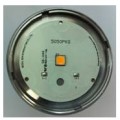 2012-07-05
2012-07-05
Seoul Semiconductor has released a new LED product called “nPola” at 'So Gong Dong Plaza Hotel' in Jong Lo Gu, to an audience of the Korean LED industry and press on July 3rd. According to the company, the unique patented technology rights have been under development by Seoul Semiconductor for over 10 years. The brightness has been dramatically improved by 5 times over the conventional LED based on equivalent die surface area. The company expects further improvements will increase this to more than 10 times existing LEDs. Currently, th...
Continue reading →
2012-07-05
Singapore Institute of Manufacturing Technology (SIMTech) is under the process of developing high-powered LED lighting for homes and offices by a new manufacturing system called ‘liquid forging’. Chua Beng Wah, lead researcher on the project explains how the team pooled forging and casting to develop the liquid forging method, subsequently using it to manufacture high-performance LED heat sinks. The process also enables unified production of intricate light fixtures (to increase surface area) and heat sinks, significantly reducing the manufacturing costs. ...
Continue reading →
2012-07-04
According to a white paper entitled “LED Manufacturing Study on CHES™ Sapphire,” ARC Energy has released results of a study showing that sapphire grown from its proprietary CHES technology yield 5% greater LED brightness than the industry standard. The study purposefully included sapphire material exhibiting a wide range of etch pit distortion (EPD) levels to determine whether or not EPD affects LED manufacturing. The study took sapphire through the complete LED chip manufacturing process and concluded that all material passed LED s...
Continue reading →
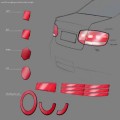 2012-07-02
2012-07-02
Osram has taken a major step toward OLEDs that are suitable for automotive applications. For the first time the company has developed an OLED that proved capable of withstanding temperatures of up to 85 degrees Celsius for several hundred hours in a laboratory long-term test. Temperature stability is the biggest challenge when it comes to making these innovative surface area light sources suitable for use in cars. "Since the success of this research we’re now tackling their future application in production vehicles", says Ulrich Eisele, responsible for th...
Continue reading →
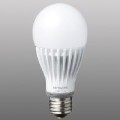 2012-06-25
2012-06-25
Hitachi Appliances Inc has announced to develop world’s first E26-base wide-light-distribution-type LED light bulb, "LDA15D-G," which can emits the amount of light equivalent to that of a 100W incandescent light bulb (1,520lm). The new bulb is to be released on July 13, 2012, in Japan. According to the company, it realized the amount of light and a wide light distribution angle like the light of an incandescent light bulb by employing a high-efficiency LED module, the "Slit Structured Body," whose slit has an about 1.3 times wider radiation...
Continue reading →
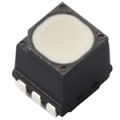 2012-06-21
2012-06-21
Nichia has developed a new surface mount LED device (SMD) for outdoor full color display applications. Under Nichia part number "NSSM032", this product is a surface mount device for all weather applications. Waterproof and silicone potted, NSSM032 is easily integrated by user due to the thicker package size and lower position of leads. Plus, the black external package color provides high contrast ratio for superior image definition. Nichia says that a higher level of outdoor screen image quality can be realized with NSSM032 even when viewed from wide a...
Continue reading →
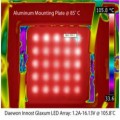 2012-06-20
2012-06-20
Daewon Innost has made a breakthrough on its Glaxum LED Array family of chip on board (COB) modules, which it claims to achieve the LED industry’s best thermal dissipation performance. The proprietary Nano-Pore Silicon Substrate (NPSS) technology developed by Daewon Innost led to thermal impedance of 0.41°C/W. Daewon Innost’s NPSS is created by applying semiconductor lithography to silicon wafers, allowing for 50µm-pitch interconnection between gallium nitride (GaN) LED chips; conventional metal-core printed circuit boards (MC...
Continue reading →
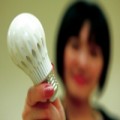 2012-06-18
2012-06-18
Recently, the Industrial Technology Research Institute (ITRI), backed by Taiwan industrial technology development organization, has developed a new A19 LED bulb with unorthodox design. The new bulb is named as “Light & Light” bulbs for being lighter and brighter, with it also capable of mood enhancement when equipped with RGB (red-green-blue) packages. Adopting typical LED backlight packages instead of high-power packages, the new bulb has low-power, small LEDs inside, with packages each containing 150 to 170 8-by-12 mil chips rated at 40...
Continue reading →
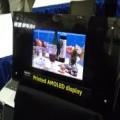 2012-06-18
2012-06-18
Sony has showcased a resolution of 500ppi for OLED panels in a symposium at SID 2012, as high as those of the latest LCD panels. The company applied OLED materials with a pixel pitch of 51μm (dot pitch: 17μm), which is equivalent to 500ppi, by using an offset printing method (thesis number: 68.4L). Sony used the offset printing method to make a 270ppi (VGA) 3-inch OLED panel that it announced at SID 2011. It realizes full color display by applying red (R) and green (G) layers with the offset printing method and combining them with a blue (B) common...
Continue reading →
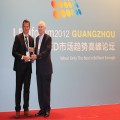 2012-06-15
2012-06-15
On June 11th, 2012, LayTec received the “Aurora Award 2012” in the category “The Best LED Test Equipment” for its latest product, Pyro 400. LEDinside, a Business Division of TrendForce Corp., granted the Aurora award to honor outstanding products for the LED industry. Tom Thieme, LayTec´s general sales manager, received the prize at the Aurora award ceremony that took place in conjunction with the recent LEDforum Guangzhou, China. Thomas Zettler, LayTec´s CEO & president, stated: “We are very proud...
Continue reading →
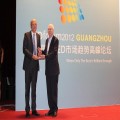 2012-06-14
2012-06-14
Best MOCVD Equipment Award 2012 for latest CRIUS II-XL Technology At the LEDforum 2012 in Guangzhou, China, AIXTRON SE has been awarded the 2012 LEDinside Aurora Award in the “Best MOCVD Equipment” category. With this award, the jury has honored and recognized outstanding products and performance in the LED industry. AIXTRON received its award for its latest CRIUS II-XL technology. Dr. C. L. Liu (on the right), Chairman of Trendforce Corporation, presented the award to AIXTRON’s Vice P...
Continue reading →
2012-06-14
Cree has released an updated, advanced process design kit (PDK) based on Agilent Technologies’ Advanced Design System (ADS) software that will provide microwave and RF design engineers with a comprehensive suite of design and simulation tools for developing GaN-on-SiC HEMT devices. The free PDK integrates the latest version of Agilent ADS with Cree’s GaN-on-SiC process technology parameters and design rules. Engineers can now more quickly develop monolithic microwave integrated circuits (MMICs). “The latest version of this...
Continue reading →
2012-06-13
Lattice Power has started mass production of its new generation GaN-based high powered LEDs on silicon substrates, which sets the backdrop for a sharp reduction in the prices of energy-efficient LED light bulbs worldwide. Lattice Power claims to be the first and only company in volume production of GaN-on-Silicon LED chips, with products that are comparable to high-end chips that rely on conventional sapphire substrates. Operating at a current of 350mA, the 45 mm product is capable of producing 130 lumen cool white with an efficiency of 120 lumens for each watt cons...
Continue reading →
 2012-06-01
2012-06-01
Japanese Nara Institute of Science and Technology has made a breakthrough on integrated optical neural stimulation and observation device incorporating an LED and a CMOS image sensor, which will help researchers in the field of optogenetics, which involves the use of light to alter the behaviour of cells. Compared with a CMOS sensor, which is an approach that has been adopted by engineers at the University of Strathclyde, UK, it is possible to build a similar system with an avalanche photodiode array. According to lead-author Takashi Tokuda from Nara Institute...
Continue reading →
2012-05-31
According to Japan LED maker Nichia's website, Everlight Electronics Co., Ltd. ("Everlight") has filed patent nullity proceedings in Japan Patent Office against 19 patents held by Nichia Corporation ("Nichia"). Among such Nichia patents is the "YAG Patent", which is the Japanese Patent No. 2927279 ("279 Patent") and is directed to white LEDs by the combinations of blue LED and YAG phosphor. The JPO held on April 9, 2012, that the 279 Patent is valid over the Everlight's challenge. Nichia also sa...
Continue reading →
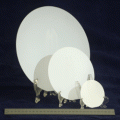 2012-05-24
2012-05-24
Kyma Technologies Inc of Raleigh, NC, USA, has made a breakthrough on a 10-inch diameter AlN-on-sapphire template using its patented plasma vapor deposition of nanocolumns (PVDNC) technology. The PVDNC AlN templates are chosen by manufacturers of blue, green and white LEDs as a replacement for bare and patterned sapphire substrates. The 250mm (10-inch) sapphire substrate was provided by Monocrystal Inc of Stavropol, Russia, which provides sapphire products and metallization pastes to the semiconductor, optical, and photovoltaic industries. According ...
Continue reading →
2012-05-24
JEDEC Solid State Technology Association, the global leader in the development of standards for the microelectronics industry, announced the publication of a new series of standards for component level testing of high-brightness/power LEDs. Development within JEDEC’s JC-15 Committee involved LED industry leaders, and resulted in the new JESD51-5x series of standards aimed at thermal characterization of power LED components. The series is in compliance with the International Commission on Illumination (CIE)’s existing LED measurement ...
Continue reading →
2012-05-23
Lately, Sumitomo Metal Mining Co., Ltd. (SMM) has teamed up with a research team from Tohoku University’s Institute of Multidisciplinary Research for Advanced Materials (IMRAM) headed by Professor Masato Kakihana, to successfully develop a new silicon-containing oxide-based red phosphor for use in white LEDs. The new phosphor is less expensively than earlier red phosphors and is expected to contribute to higher performance in white LEDs as sources of illumination. The collaborative R&D program succeeded in developing the first oxide-based pho...
Continue reading →
 2012-05-22
2012-05-22
By Terry Mocherniak, director global business development for the LMS business unit of OSRAM SYLVANIA A well-lit environment creates a more positive shopping experience for customers at retail locations of all sizes. As such, the retail industry in the U.S. spends nearly $20 billion on energy each year according to the United States Environmental Protection Agency (EPA) with lighting as the largest energy drain. The EPA also estimates that a 10% reduction in energy costs for average retail outlets could increase profit margins by 16% annually. An ...
Continue reading →
 2012-05-18
2012-05-18
Lexington-based QD Vision, Inc., a spinoff of MIT, has developed Quantum LightTM Optic and the lamp is termed a quantum LED (QLED), to produce both lamps and downlighting fixtures that emulate the warm colors of an incandescent bulb but provide much greater light power and lamp life-time. The mechanism behind this extraordinary development is the redistribution of color by means of “quantum dots”. The ability to tune the color of a quantum dot offers a way to redistribute the harsh LED light by placing a specially designed layer of quantum dots in fron...
Continue reading →
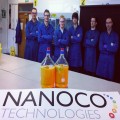 2012-05-18
2012-05-18
Japanese Nanoco Group has made great breakthrough on a 1kg batch of green cadmium-free quantum dots for a major Japanese corporation, triggering a US $2 million payment to Nanoco. The green quantum dots were produced at Nanoco's production facility in Runcorn, Cheshire. It marks major technical achievement by Nanoco because green dots are significantly more challenging than red ones due to their smaller size. The Japanese corporation plans to incorporate Nanoco's red and green quantum dots including the backlighting of LCD displays and LED-based general li...
Continue reading →
2012-05-18
First issued patent of 7 patents pending around Lumentalk technology Lumenpulse Inc., a leading innovator and manufacturer of high performance, architectural LED-based lighting solutions for commercial, institutional, and urban environments, today announced it has received U.S. Patent 8,179,058, issued May 15, 2012. The patent, the first of seven pending for the company’s Lumentalk™ technology, provides a method of intuitively reading a traditional analog TRIAC dimmer in a digital fashion, which enables digital control of LED lighting over existing AC po...
Continue reading →
2012-05-15
Recently, a team of researchers from North Carolina and Japan have jointly made a breakthrough on UV disinfection using LED technology. As we know, aluminum nitride (AlN) is used in LEDs, based on its strengths which can handle a lot of power and create light in a wide spectrum of colors, particularly in the UV range. But AlN LEDs to create UV light have been severely limited because the substrates that served as the foundation for these semiconductors absorbed wavelengths of UV light that are crucial to applications in sterilization and water treatment technolo...
Continue reading →
2012-05-11
Seoul Semiconductor has showcased its 3020 Series, adding to mid-power LEDs family in booth 3538 at the Lightfair International trade show in Las Vegas . The 3020 Series will be offered in the full range of ANSI white space, with standard binning and LM-80 testing. The entire family is general illumination class and comes with coloring rendering index (CRI) versions of 80 or 90 (minimum) and with luminous efficacies as high as 151lm/watt (cool white) and 136lm/watt (warm white). Following the firm’s 5630 package, the new LED is particularly suited to sma...
Continue reading →
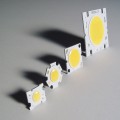 2012-05-11
2012-05-11
Bridgelux Inc. and Toshiba Corporation announced that Bridgelux and Toshiba have achieved the industry’s top class 8” GaN on Silicon LED chip emitting 614mW, <3.1V@350mA with 1.1mm square chip, just months after they have engaged in a joint collaborative agreement this year. Bridgelux and Toshiba will further accelerate their development efforts for LED chips, which have seen increasing demand for LCD panels and lightening systems world wide. Toshiba has also made an equity investment in Bridgelux with the intent to jointly pursue an innovative t...
Continue reading →
2012-05-07
Recently, researchers from Japan and California have jointly made a breakthrough on blue and green LEDs to reduce efficiency droop. According to the research team, they designed low droop and high efficacy LEDs by altering the direction of the crystal structure within semiconductor films. Droop refers to significant drop in efficiency at extreme currents. It is one of the major factors that retard the growth of the solid-state lighting market. Household bulbs generate white light due to the mix of wavelengths with the hue produced from blue and green LEDs. These valuab...
Continue reading →
 2012-07-11
2012-07-11
 2012-07-06
2012-07-06
 2012-07-05
2012-07-05
 2012-07-02
2012-07-02
 2012-06-25
2012-06-25
 2012-06-21
2012-06-21
 2012-06-20
2012-06-20
 2012-06-18
2012-06-18
 2012-06-18
2012-06-18
 2012-06-15
2012-06-15
 2012-06-01
2012-06-01
 2012-05-24
2012-05-24
 2012-05-22
2012-05-22
 2012-05-18
2012-05-18
 2012-05-18
2012-05-18
 2012-05-11
2012-05-11